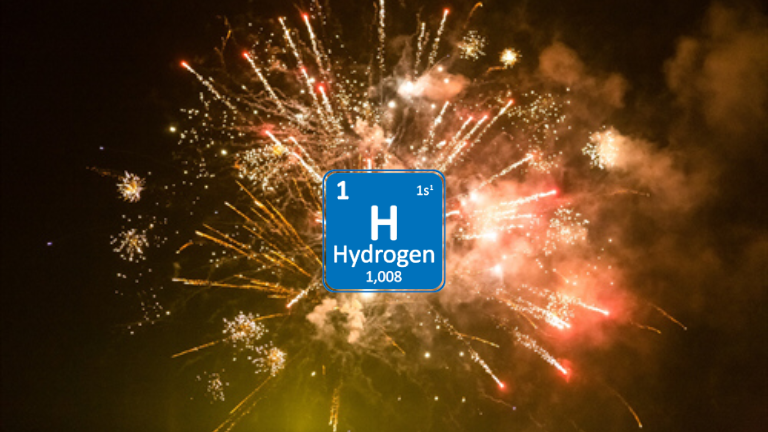A fashionable climate alarmism welcomes any proposal for an energy transition as a new philosopher’s stone, just like the hydrogen-mania that has taken hold of the chancelleries and corrupted the minds of engineers who have lost their probity. Here I have to debunk a leap of faith that is irrational, downright stupid and certainly scandalous, in the light of what hydrogen is and what it is not.
It is no primary energy that can simply be harvested, like coal, oil, gas, solar irradiation or uranium. To obtain it, another form of energy must be consumed, whether through the partial combustion of natural gas, the electrolysis of water, which consumes electricity (energy efficiency of 60-70%), or the thermolysis of water at high temperature, which has yet to be developed industrially with dedicated nuclear reactors or solar thermal power stations.
Neither coloured nor primary, nor accumulable in large quantities, it is a very useful chemical reagent for the production of nitrogen fertilisers, in petrochemical industry, and for fine chemicals. The dihydrogen molecule is a gas with a wide explosive range in air (from 4% to 75%).
To frighten them, bad chemistry teachers will have demonstrated this to their pupils, by filling a balloon with two volumes of hydrogen and one of oxygen and then detonating the mixture. 17 times less energy is needed to initiate this explosion than to ignite natural gas. Hydrogen, a particularly fleeting and dangerous gas, must never be put in the hands of ordinary consumers.
Its heat of combustion of 120 MJ/kg (or 33.3 kWh/kg) is one of the highest, but under normal conditions this kilogram takes up a volume of more than eleven cubic metres, which is not practical. It must then be compressed to 700 bar to occupy 24 litres, or liquefied at -252.87°C to fill 14 litres. In comparison, the same energy in the form of ordinary petrol takes up a volume of 3.5 litres.
Mixing H2 with natural gas in existing networks is also proposed, but it’s a swindle with reduced calorific value due to dilution, increased cost and higher risks of leakage.
Making hydrogen to store energy before burning it in internal combustion engines or fuel cells is the worst way to use it and the best way to waste three quarters of the electricity consumed into the environment.
It is downright moronic to persist in developing an expensive and dangerous “hydrogen industry”, as the EU Commission intends to do.
Graph: Comparison of electricity requirements for vehicles powered by a fuel cell burning hydrogen (50% energy efficiency) and for electric vehicles with lithium batteries. The more stages there are in between and the more inefficient they are, the greater the losses (in orange), which are around 75% in the case of hydrogen and 12% for batteries.
The graph above shows that, to obtain the same mechanical propulsion service, 3.3 times more electricity would be needed for a hydrogen-powered system than for simple battery-powered vehicles.
What’s more, the idea of producing hydrogen by electrolysis of water from intermittent sources of electricity is just another way of being inefficient. Electrolysers can only work if the source is active, so on average they will only be used at 11% of their capacity if the source is photovoltaic or at 20% for wind power in Switzerland. This race towards inefficiency and investments that are overblown and poorly used is sheer madness.
Hydrogen is much more valuable if it is not burnt. Among other things, there exist processes for reducing CO2 to obtain organic derivatives, such as synthetic fuels (synfuels). The conversion rates and yields of these processes are still far too low to make them economically acceptable. Nevertheless, it is worth trying to develop them on an industrial scale, as there was no incentive to do so fully in the past. A real technological breakthrough will be needed so that, combined with the thermolysis of water to produce abundant and inexpensive H2, synthetic fuels can become a valid solution for truck and air transport. Substantial investment in R&D is justified, provided that it is carried out by institutes of the highest level of excellence.
Until then, it is scandalous to put the cart before the horse and prematurely waste immense sums of money investing in a gigantic and absurd ” gaz maze “.
To dispute what is presented here, arguments are needed, and I challenge anyone to provide them.
To find out more, read Samuel Furfari’s book “The Hydrogen Illusion“, also in French “L’utopie de l’hydrogène“.
This post is also published in German on the Carnot-Cournot-Netzwerk website.
Merci de partager et de diffuser cet article !
